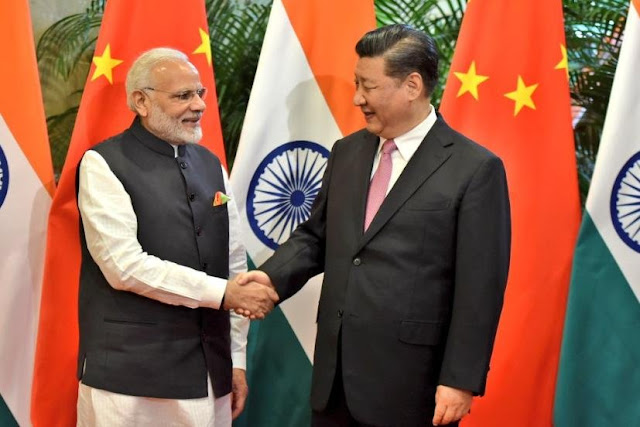UPDATE ON BRICS CURRENCY - China and India are not as friendly as most people believe
A discussion about alternatives to the US dollar as the world's reserve currency has raged for over a year, whether it's the Chinese yuan gold or even bitcoin.
As Washington is feared to be weaponizing the dollar-denominated global financial system against Russia over the Ukraine war, the debate has grown so intense that a BRICS summit in August discussed creating a currency that would challenge the dollar.
Brazil, Russia, India, China, and South Africa lead the bloc.
But here's the deal: The two major forces within BRICS, China and India, agree on very little.
In order to establish a common currency, BRICS countries will need to align on several issues, including setting up a central bank and phasing out their currencies.
In August, the dollar accounted for 48% of global payments via the SWIFT messaging system - significantly more than the euro's 23%. The euro took decades of preparation within Europe, but its use globally is still far behind the dollar's.
Also, there is a problem between India and China, the two biggest economies in the bloc.
Jim O'Neill, the former Goldman Sachs chief economist who came up with the BRIC acronym in 2001 (South Africa joined the bloc in 2010 to round out BRICS) has recently been fielding interview questions about the proposed BRICS single currency.
The idea that India and China would abandon their own monetary policies and commit to a shared currency is crazy, is hard to believe.
China-India relations have also been described as tense by other analysts.
In short, Beijing and New Delhi appear to be frenemies despite their active engagement with each other.
In recent history, China and India have been embroiled in a territorial dispute along their shared Himalayan border - and even fought a war.
Despite the border dispute and rising nationalism in both China and India, the neighbors have appeared to be getting deeper into frenemy territory since 2020.
At the BRICS summit in Johannesburg in August, Xi Jinping, the Chinese leader, and Narendra Modi, the Indian prime minister, agreed to de-escalate tensions at the disputed border.
It wasn't until a month later that the relationship was again questioned when Xi missed the G20 Summit in Delhi - the first time since 2008. Beijing didn't explain Xi's absence, and Premier Li Qiang led the Chinese delegation instead.
Chinese spokesperson Liu Pengyu told Insider that Xi spoke with Modi on the sidelines of the BRICS summit at Modi's request.
According to Liu, President Xi stressed that improving China-India relations serves the interests of the two countries and peoples, as well as peace, stability, and development throughout the world and region.
Aside from politics, the two countries have also become strategic competitors economically.
According to the International Monetary Fund, China has a gross domestic product of $19.4 trillion. India has a gross domestic product of $3.7 trillion. It is unlikely that India's GDP will surpass that of China in the next five decades, but both emerging markets remain fierce competitors.
According to UN estimates, India is the world's largest country. Due to its large population and young age — the median age is 28 — it is an attractive option for companies looking to diversify their risks beyond China, the world's factory for the past 40 years.
Considering China and India are the two biggest players in BRICS, they would need to find common ground to create a common currency.
As a result of the BRICS summit in August, there was no new currency, and all five members issued contradictory comments about de-dollarization. According to the latest summit, only Russia and Brazil have pushed for a BRICS common currency. China hasn't responded, while India and South Africa said it wasn't on the agenda.
There could be a narrow range of uses for a BRICS currency if it materializes.
The Institute of South Asian Studies at the National University of Singapore's Institute of South Asian Studies is seeking to establish a common BRICS currency, but there are bigger issues standing in the way — like diverse regulatory environments and the difficulty of trading the currencies of all its members.
Although China and India know that they are rivals, neither is willing to grant concessions to the other.





